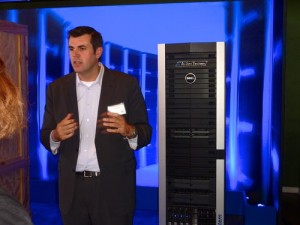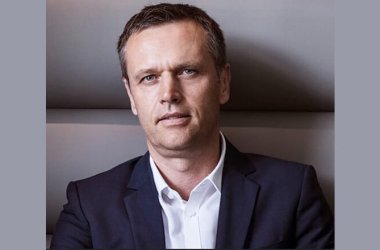 Dell mapped out the next phase of its data centre strategy on Thursday with new hardware and software that it says will make it faster and cheaper for customers to deploy new hardware and applications.
Dell mapped out the next phase of its data centre strategy on Thursday with new hardware and software that it says will make it faster and cheaper for customers to deploy new hardware and applications.
The new products include the Active System 800, which combines Dell servers, storage and network gear in a pre-assembled rack that it says customers can fire up quickly to deploy a virtual desktop infrastructure, a private cloud or business applications.
It also introduced Active System Manager, a template-based provisioning tool that can automate some of the repetitive steps in configuring servers, which it said will also reduce errors. Both products will be available in the U.S. in November and worldwide early next year, Dell said.
At the same time, Dell will phase out a line of similarly integrated systems that it introduced last year under the brand vStart, said Tim Mattox, Dell’s vice president of strategy, in an interview. Dell says the new Active Systems offer better hardware and management capabilities than the vStart systems they’ll replace.
The Active System 800 comes in toward the high end of the vStart lineup. Dell will eventually offer other Active Systems at different price points to replace the other vStart products.
It’s the latest step in a broader push by Dell to move beyond selling PCs and stand-alone servers and into higher-margin gear. It’s bought several companies in support of the effort, including SonicWall, AppAssure and Scalent, and most recently, Quest Software for US$2.6 billion.
It’s a challenge for Dell, which moved later than rivals such as IBM and Hewlett-Packard to diversify its business. To support the converged systems push, Dell hired Marius Haas, who previously ran HP’s network business, and John Swainson, the former CA chief, to boost its software efforts.
Haas announced the products and outlined Dell’s strategy at an event for press and analysts in San Francisco Thursday. Customers are under pressure to deploy systems more quickly and at lower cost, and Dell can help them do that, he said.
One way Dell hopes to differentiate itself is with a technology that allows the flash memory in a rack of servers to be viewed as a single, large pool of memory. That will provide a 10-fold performance boost for some applications, according to Dell. Business intelligence seems a likely candidate.
Dell hasn’t said yet how it will bring the memory technology to market. Mattox said customers who buy a Dell server now will be able to upgrade to the memory-pooling technology when it’s available, through new memory cards and a firmware update.
Dell also helps to differentiate itself by giving customers a bit more flexibility. If they don’t like how a system is put together, Dell will provide a reference architecture that allows them to swap out Dell’s storage or network components, for example. However, that will mean a service engagement or more work for the customer’s IT department.
Despite working at HP for years, Haas was happy to take shots at his former employer. HP’s products are “complex and costly,” he charged, while Cisco’s Unified Computing System is “inflexible and incomplete,” in part because Cisco has to partner for its storage.
But Dell is later to market than both Cisco and HP, noted IDC analyst Jed Scaramella. It’s heading in the right direction, however. Customers are starting to realise that virtualisation alone isn’t always enough to give them a more efficient data centre, he said.
“For some of these complex environments like the private cloud, they need these purpose-built systems like HP and Oracle are offering,” Scaramella said. And Dell is now getting into the game, too.
The Active Systems will be based on Dell’s PowerEdge M1000e chassis and blade servers; Compellent or EqualLogic storage, including a new EqualLogic Blade Array; and a new I/O module called the PowerEdge M I/O Aggregator, which is designed to orchestrate all the I/O traffic to ensure maximum bandwidth.
The Active System 800 is for applications that need high performance and includes Force10 networking components, Dell said. It didn’t give pricing for any of the products Thursday. The Active Systems will initially support hypervisors from Microsoft and VMware, said Andy Rhodes, executive director for virtualisation and cloud solutions.





